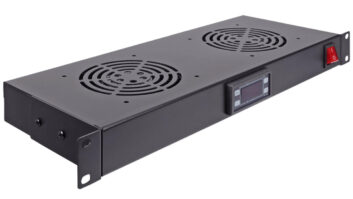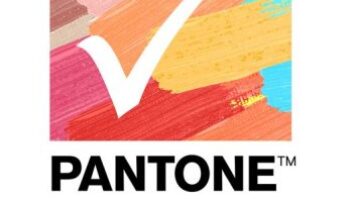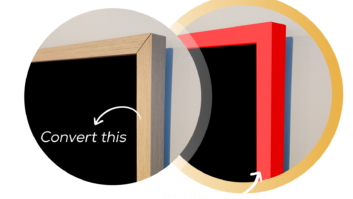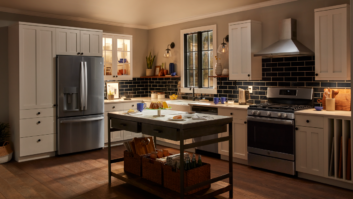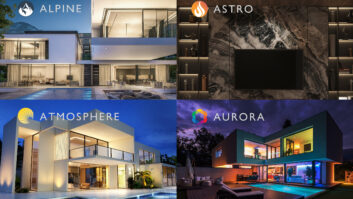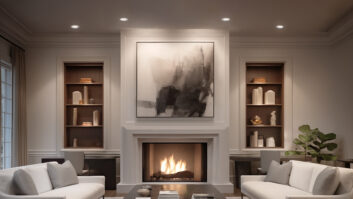Many of you are likely ISF and/or THX certified video calibrators and thus have a terrific understanding of color temperature. And even if you haven’t been through the certification, you’re probably at least familiar with the term 6500 kelvin—or more accurately in cal-speak… D-65 or, even more technically, points x=0.3127, y=0.3290 on the CIE Chromaticity Diagram. And if you are associated with this industry and don’t have any idea what I’m talking about, then please immediately go and tell your supervisor that you need to spend several minutes reading this and that you will return a much more educated and informed employee, ready to go forth with a better understanding of video technology.
The truth is, for many of your clients, the idea that color has a temperature is confusing and irrelevant. Red is red, blue is blue, what does temperature have to do with anything? Or why is a higher temp—say 9500 kelvin—considered “cool” (more blue) while a lower temp—say 5400 kelvin—is “warm” (more red)?
There’s a lot of science about the Kelvin scale that you might find interesting, but ultimately don’t really need to know. The takeaway is that kelvin scale “is an absolute, thermodynamic temperature scale using as its null point absolute zero—the temperature at which all thermal motion ceases in the classical description of thermodynamics.” Actually, you probably don’t even need to know that. Most important, kelvin is the standard of measurement used for color temperature.
On this color chart, known as the CIE Chromaticity Diagram—a chart that calibrators are intimately familiar with—you’ll notice a line running right through the middle of the colors.

This line is known as the black body curve. Again there’s more science than you probably care to know, but the important bits are that a black body “is an ideal emitter: it emits as much or more energy at every frequency than any other body at the same temperature.” Thus, when heated to different temperatures—measured in kelvin—a black body radiates light of comparable hue to that of the light source; 5400 kelvin produces a reddish-orange glow, 10,000 a blue-white.
(Pop quiz: Looking at this chart, what color do you think we humans see the best? If you said, green, you’re a winner!) That’s it for the science, I promise.
But what does this have to do with video and lighting? Plenty. In the video world, every color and shade is produced by different combinations of red, green, and blue (RGB) light mixed at different levels of intensity. Full black is a complete absence of light—called 0 IRE—and an equal mix of colors at maximum intensity produces peak white—100 IRE. The grayscale is the range of steps between full black and peak white, and ideally the only thing that changes from one shade of gray to the next is the intensity of the light, not the color mix.
Here’s where it all comes together… Many years ago, scientists and engineers formed a standards committee and determined that the ideal shade of gray for video reproduction was point D on the CIE black body curve. They figured that this color closely approximated sunlight on an overcast day. When this decision was made, content producers for film and TV calibrated their monitors to display an “accurate” grayscale, ensuring that everyone throughout the work chain was looking at and working with an identical image.
Today we calibrate monitors to D65 so that our customers are seeing images exactly the same as the content producer intended. A display that is too cool—higher than 6500 kelvin—will have images that are skewed blue. A display that is too warm—less than 6500 kelvin—will have images biased red.
What’s important to remember, is that you cannot have an accurately reproduced color picture if your gray is not set correctly. It’s the only way to see a truly accurate image the way the director intended. Here’s a good analogy from THX trainer and uber-calibrator, Michael Chen: “What colored tint glasses do you want to wear when you’re viewing the Mona Lisa? Do you want it her to have a blue-ish end-of-Titanic look, or a reddish this-is-Sparta-300 tint? Or do you want to see the painting how it really is?”
In the lighting world, you have probably heard people say that they hate the look of a particular light, say those new compact fluorescent bulbs that can be described as “sickly,” “anemic,” and “jaundiced.” This is because they have a color temperature that is lower than traditional incandescent bulbs. You’ve probably also seen those piercing blue-ish looking headlights on some cars. This is because they have a much higher temperature. We humans perceive “bluer” as brighter, which is why so many TV sets leave the factory with a very high, and totally inaccurate, color temperature; it helps the TV “stand out” on a crowded display shelf. This is also why you see “blue crystals” in products to make them appear whiter to our eyes.
So, I was browsing through Home Depot last weekend and I stumbled on this terrific display in the lighting section that perfectly explains color temperature in a way that will be immediately apparent to any viewer:

Another display, which was designed to show off the energy-saving benefits of LED lighting, illustrates the dramatic temperature differences between incandescent and LED.

Having a proper understanding of color temperature and being able to explain and articulate it to clients can help you sell better displays. Also, being able to explain lighting will make you appear the authority, which will likely help you close more lighting control system sales. And the best kind of science is the one that can help you make more money.
John Sciacca is principal of Custom Theater and Audio in Myrtle Beach, SC.
